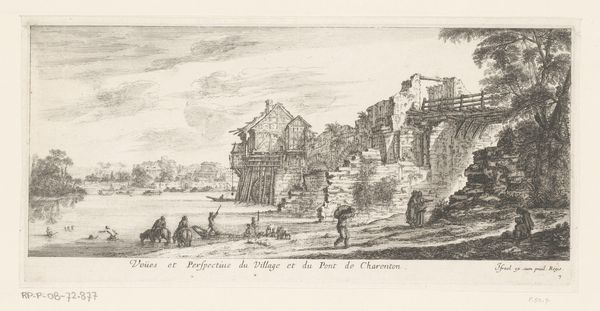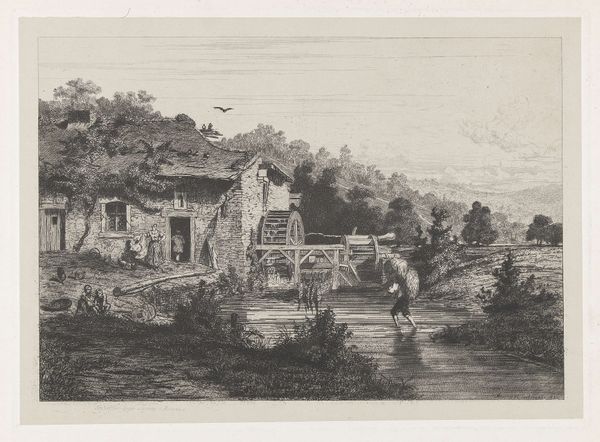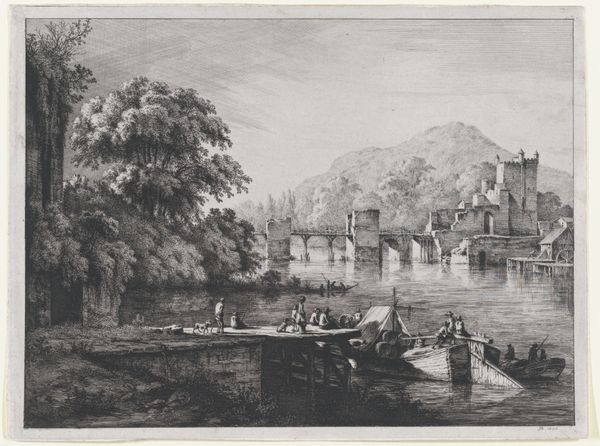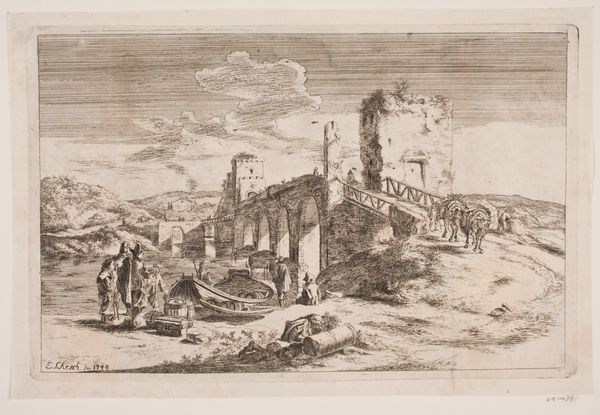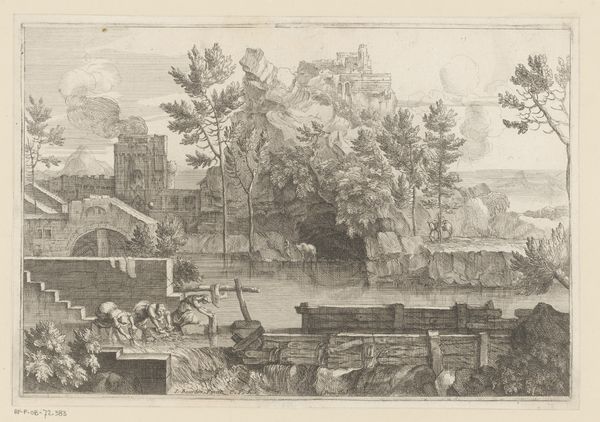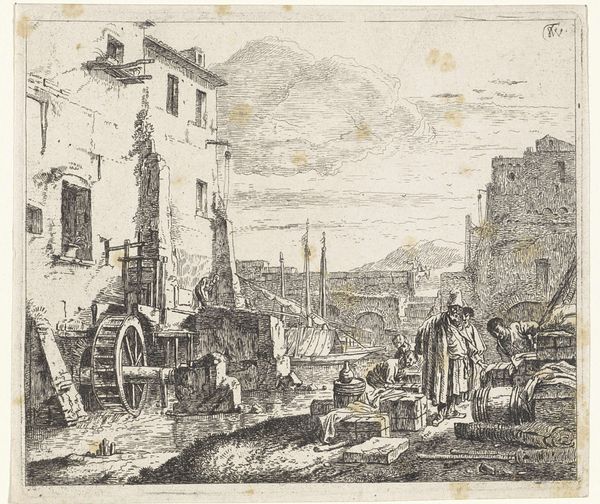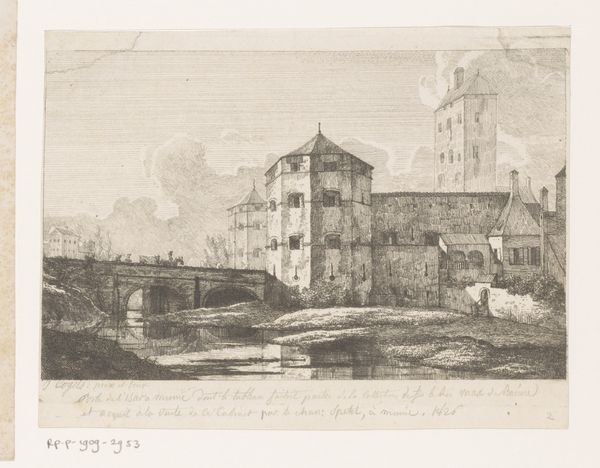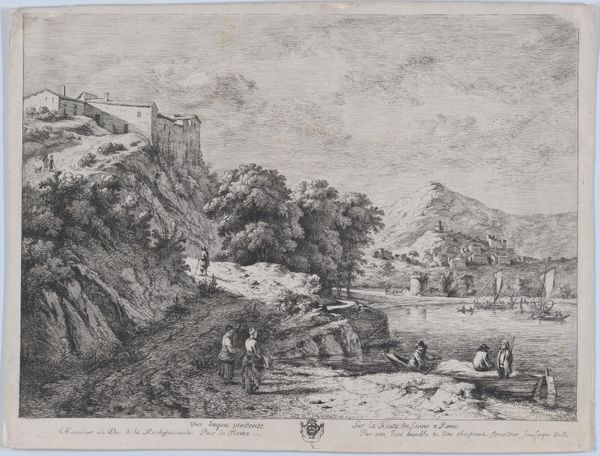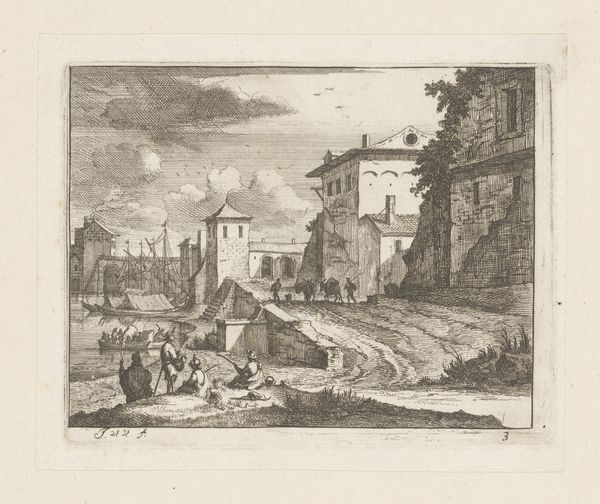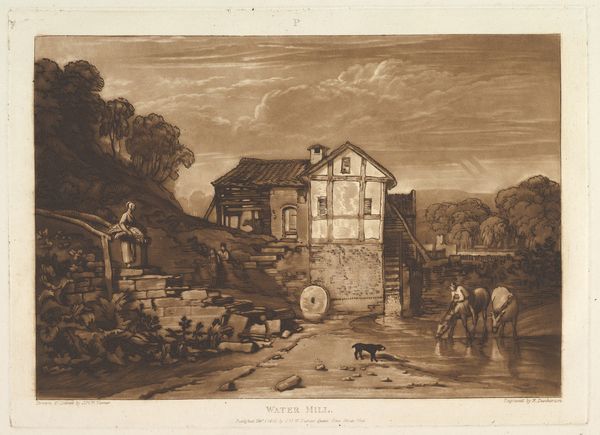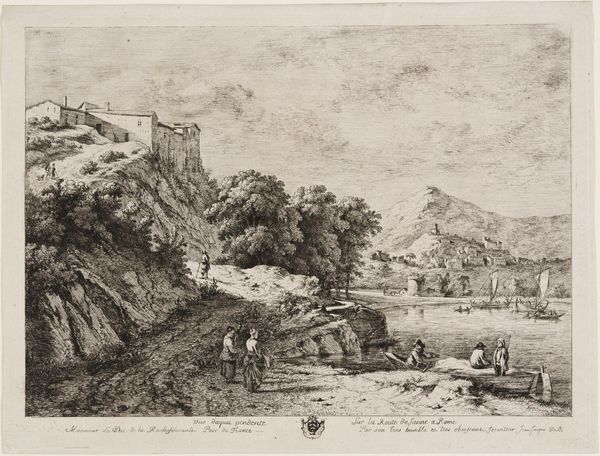
The Cloaca Maxima, the sewer formerly called the the Bel Lido, with the Round Temple and Santa Maria in Cosmedin 1776
0:00
0:00
print, engraving
# print
#
landscape
#
cityscape
#
italian-renaissance
#
engraving
Dimensions: 447 mm (height) x 670 mm (width) (plademaal)
This etching of the Cloaca Maxima, formerly known as the Bel Lido, with the Round Temple and Santa Maria in Cosmedin was completed by Giovanni Battista Piranesi. Piranesi’s work often romanticized and monumentalized Rome’s ancient structures. He was working in a period of intense archaeological discovery, as the city began to unearth its past. Piranesi renders the sewer as a grand architectural statement, one that emphasizes the historical weight of Roman engineering. The Cloaca Maxima was one of Rome’s earliest and most important sewer systems, originally built to drain the city’s marshes. In Piranesi's etching, the sewer transforms into a majestic channel, reflecting how infrastructure can shape the social and physical landscapes of urban life. The contrast between the sewer’s functional origins and its romanticized depiction raises questions about whose labor built and maintained these structures. The reflections in the water hint at the complexities of history and memory, inviting viewers to contemplate the layers of time and experience embedded in this ancient site.
Comments
No comments
Be the first to comment and join the conversation on the ultimate creative platform.
